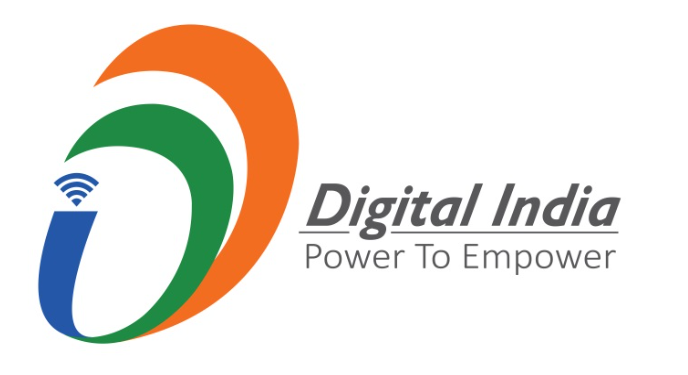
Digital India: Practice and Experiences
Latest
 |
| Digital India: Practice and Experiences. Photo is SANDEEP ARYA- Ambassador of India to Vietnam. (Source: WVR) |
Digital India programme has three main components: provision of digital infrastructure as a core utility to drive digital transformation; offering governance and widest range of services in India through digital platform; ensuring empowerment of citizens through digital literacy and universal accessibility of user-friendly digital resources and services.
The lead in making available digital infrastructure
The Indian government took the lead in making available digital infrastructure comprising of high speed internet backed by mobile phone connectivity, bank account access, and digital identity for every citizen that is unique, online and authenticable. Digital identity ‘Aadhaar’ managed by autonomous government authority ‘UIDAI’ using biometrics is available to 1.37 billion Indians with real-time authentication of citizens using digital services. This digital identity verification tool became a core of digital transformation by obviating physical presence of citizens availing various services & de-duplicating identities.
Second core element of digital transformation in India is the real-time Unified Payment Interface (UPI) operated by the National Payment Corporation of India for all digital transactions using net-enabled bank accounts, cards, digital wallets or phone payments. 850 million internet users and 1.14 billion mobile subscribers in India supported by rapid expansion of bank facilities to 482 million social security beneficiaries extended banking to 80% adult population linked them to instant digital payment system. UPI facilitates 10 billion instant payment transactions per month in India which accounts for over 45% of real-time payments globally.
Universal, real-time authenticable digital identity system ‘Aadhaar’ together with unified digital payment interface ‘UPI’ provided the foundation led by the government of India that enabled placing of data exchange and deployment of services by government, agencies, banks, service providers for use by any citizen of India. This real-time remote identity verification together with real-time payment mechanism has driven the digital transformation revolution in India.
The range of digitized services available to citizens of India is growing constantly covering personal documents (birth, marriage, tax account, insurance, driving, vehicle registration, voter, academic, passport, covid vaccination certificates); government welfare schemes (pension, health cover, employment assurance, public distribution, scholarships, subsidies); utilities (electricity, water, gas, tax filing & payment); innovative services (crop price information for farmers, public security support, telemedicine, digital land records, geospatial information system) and so on. New digital services are getting added constantly using the base created in past years.
The creation of digital locker services
One recent initiative is the creation of digital locker services linking together the citizens to authentic digital record verified by data publishers, which can be used by data consumers representing verified identity and data of users. A useful application is paperless, digitized process of university admissions with authenticated academic records, application forms, testing scores, payments and admission formalities. Another interesting example is India’s government e-market place (GeM) for government’s procurement of goods and services such as equipment, stationery, vehicles, outsourced services by removing physical interface and malpractices between government offices and service providers.
 |
| The image is the Official Logo of India Digital. (Source: WVR) |
To ensure that these services are available to rural and remote areas, government facilitated common service centres as access points for delivery of digital services to residents across the country far beyond urban centres. Around 535,000 such centres are providing banking, personal documents, welfare, utility and numerous innovative digital services in rural and remote areas in India. More authorities and offices are taking advantage of authenticated identity and payment layers and network of service centres by offering newer services digitally such as medicine distribution system.
In terms of digital infrastructure, the government is constantly upgrading the availability of broadband highways (national optical fiber network), universal highspeed mobile connectivity, public internet access, open data platform and encouraging government services to be integrated to the data exchange layer between data publishers and consumers using application programming interface. This upgraded infrastructure ensures effective and efficient provision of digitized services for our largest population in the world. As part of this exercise, technological innovation is being prioritized such as creation of new 5Gi standard by India for extending 5G telecommunication services in rural and remote areas; earlier this year, the Indian government launched 6G vision and 6G test-bed infrastructure that is expected to be commercialized in another 7 years or so.
One can visualize the ease of living unleashed by the digital transformation in India where a person can avail of a huge range of digital services from government documentation, banking, welfare, utility payment, healthcare services and so on from the comfort of one’s home. This data-driven digital revolution is generating new opportunities such as bank credits to small businesses based on digitized sales data verified from the digital payment system rather than through mortgage or cumbersome documentation.
As G20 President this year, India has led the G20 digital economy working group to develop a voluntary Framework for development, deployment and governance of Digital Public Infrastructure; High-level Principles to support safety, security, resilience and trust in digital economy; Toolkit for designing and introducing digital upskilling and reskilling programs; and plan to build and maintain a virtual Global Digital Public Infrastructure Repository. This will build upon India’s national initiative digital public infrastructure available in more details at www.indiastack.global, ispirt.in.
Vietnam is implementing its own digital transformation model to meet its needs and priorities for a digital economy. India-Viet Nam dialogue offers an opportunity to exchange practices, experiences and solutions to enhance our respective efforts and march forward together to lead digitized world in the times ahead.
















